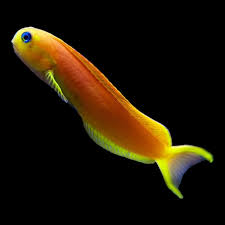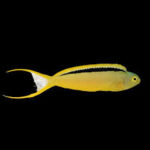The Combination of Dragons and Natural Elements in Chinese Feng Shui: Harnessing Cosmic Energy for Harmony and Prosperity

In Chinese culture, the dragon is one of the most revered symbols, embodying power, strength, wisdom, and good fortune. This magnificent creature, however, does not exist in isolation. Its significance is often intertwined with other elements of nature in Chinese philosophy, particularly within the framework of Feng Shui. Feng Shui, an ancient practice aimed at creating harmony between individuals and their environments, relies on a careful balance of natural elements to promote well-being, prosperity, and peace. One of the most striking aspects of Feng Shui is the use of the dragon, a creature traditionally associated with elemental forces such as water, fire, earth, and wood, to harness the dynamic flow of energy known as “Qi.”
This article explores the role of the dragon and its connection to the five elements in Chinese Feng Shui. We will delve into how the dragon interacts with each of the natural elements and how its influence can be used to enhance energy flow in the home, workplace, and other living spaces. By examining these combinations, we will uncover how the dragon’s potent symbolism aligns with the core principles of Feng Shui to help create a balanced and harmonious environment.
The Dragon in Chinese Culture: A Symbol of Cosmic Power
Before examining the connection between the dragon and the elements, it is essential to understand the dragon’s cultural significance in China. In Chinese mythology, the dragon is a symbol of imperial power and divine authority. Unlike the fearsome dragons in Western cultures, which are often portrayed as destructive creatures, the Chinese dragon is seen as a benevolent and wise being with control over water, weather, and other natural forces. It is an auspicious symbol of good fortune and prosperity, representing the harmonious balance between heaven and earth.
As a celestial being, the dragon embodies the principles of balance and unity, which are central to Feng Shui. The practice of Feng Shui itself revolves around the flow of Qi—the vital life force that is present in all things. In this context, the dragon serves as a cosmic connector, channeling and amplifying the flow of Qi to benefit individuals and their surroundings. By combining the dragon with other elements of nature, practitioners of Feng Shui aim to align themselves with the forces of nature to bring about positive outcomes.
The Five Elements of Feng Shui
In Feng Shui, the five elements—wood, fire, earth, metal, and water—represent the building blocks of the natural world. Each element has its own unique characteristics, qualities, and energies that influence the environment and the people within it. The elements interact with one another in various ways, either nurturing or controlling each other. The goal of Feng Shui is to balance these elements to promote the smooth flow of Qi, leading to greater health, happiness, and success.
- Wood: Representing growth, vitality, and creativity, wood is associated with the energy of spring, renewal, and development. It is a nurturing element that supports life and encourages growth and expansion.
- Fire: Symbolizing passion, energy, and transformation, fire is linked to warmth, illumination, and excitement. It is an element of action, representing energy and dynamic movement.
- Earth: Grounded and stable, earth represents nourishment, support, and stability. It is connected to the energy of late summer, the harvesting season, and provides balance and harmony to the environment.
- Metal: Associated with clarity, precision, and focus, metal represents the energy of autumn. It is linked to strength, organization, and the ability to cut through obstacles, both physically and metaphorically.
- Water: Symbolizing flow, adaptability, and abundance, water represents the energy of winter and is associated with wealth, career success, and deep wisdom. It nurtures all life and is the source of creation and transformation.
Now, let’s explore how the dragon, a powerful and versatile symbol, interacts with these five elements in Feng Shui to create a harmonious environment.
The Dragon and Wood: A Symbol of Growth and Prosperity
Wood is the element most closely associated with the dragon. In Chinese philosophy, the dragon is often depicted as living in forests or mountains, areas where wood is abundant. The energy of wood, which represents growth, vitality, and creativity, aligns perfectly with the dragon’s role as a symbol of expansion and abundance. When the dragon is paired with wood, it enhances the flow of positive Qi that encourages prosperity and success.
In Feng Shui, placing dragon symbols in areas associated with the wood element—such as the east and southeast sections of a space—can help attract opportunities for growth and development. For example, a wooden dragon statue or painting can be displayed in the eastern corner of a home or office to promote new beginnings, creativity, and overall prosperity. The combination of the dragon’s cosmic power with the nurturing energy of wood creates a powerful force that supports both personal and professional growth.
The Dragon and Fire: The Fusion of Passion and Power
Fire, with its dynamic energy, is another natural element with which the dragon has a strong connection. The dragon is often depicted as breathing fire, symbolizing its ability to control and harness this powerful force. In Feng Shui, the fire element represents passion, transformation, and vitality. When paired with the dragon, fire amplifies the dragon’s power and infuses it with a sense of urgency and action.
The combination of the dragon and fire is ideal for areas that require energy, vitality, and drive. The south, which is traditionally associated with the fire element in Feng Shui, is a powerful location for incorporating dragon imagery. Placing a dragon statue or artwork in the southern part of a room or space can ignite passion and inspire action. This combination is particularly useful for individuals seeking motivation, creativity, or an increase in energy levels. It is also an excellent pairing for those who wish to bring more excitement and transformation into their lives.
The Dragon and Earth: Stability and Strength
The earth element is the foundation of all things, providing stability, nourishment, and support. In Feng Shui, the earth element is often associated with the center of a space, representing balance and harmony. When the dragon is paired with the earth element, it helps to ground the powerful energy of the dragon, ensuring that it remains balanced and stable.
The dragon’s presence in areas with earth energy promotes harmony and stability, making it an ideal symbol for central areas of the home, such as the living room or family room. The dragon’s power can help stabilize relationships, create a sense of security, and support family unity. In Feng Shui, dragon symbols made of materials such as ceramic or clay, which are connected to the earth element, can be used to enhance these energies. The earth-dragon combination is also particularly beneficial for those seeking to build a solid foundation in their personal and professional lives.
The Dragon and Metal: Clarity and Precision
The metal element is associated with clarity, organization, and precision. Metal’s energy is sharp, focused, and transformative, making it an excellent complement to the dragon’s dynamic power. In Feng Shui, metal helps to channel the dragon’s energy, ensuring that it is directed with clarity and purpose. When the dragon is paired with metal, it can bring about positive change, transformation, and success.
The dragon and metal combination is ideal for areas of the home or workplace that require focus, organization, and decision-making. The northwest and west sections of a space, which are associated with metal, are ideal locations for displaying dragon symbols made of metal. This combination is especially beneficial for individuals who need to sharpen their skills, clear obstacles, or make important decisions. The dragon’s influence can help to bring clarity to challenging situations and enhance the potential for success.
The Dragon and Water: Flow, Abundance, and Prosperity
Water, in Feng Shui, is the element most closely linked to wealth, career success, and abundance. The dragon’s ability to control water, particularly in the form of rain, is a key part of its symbolism. The combination of the dragon and water creates a powerful force that nurtures prosperity, success, and flow in all aspects of life.
Water is particularly important for the north sector of a space, which is traditionally associated with career and life path. When the dragon is placed in this area, it can help to enhance career opportunities, promote wealth, and support personal growth. A dragon sculpture near a water feature, such as a fountain or aquarium, can create a harmonious and prosperous environment. The dragon’s energy helps to direct the flow of water’s nurturing properties, ensuring that wealth and success continue to flow freely into the individual’s life.
Conclusion
The dragon’s influence in Chinese Feng Shui is profound and far-reaching. By combining the dragon with the five elements—wood, fire, earth, metal, and water—Feng Shui practitioners can harness the dragon’s cosmic energy to create harmony, balance, and prosperity in their lives. Each element offers a unique way to enhance the dragon’s symbolism, amplifying its power and influence over different aspects of life, from personal growth and vitality to wealth, success, and stability.
As a symbol of cosmic power, wisdom, and protection, the dragon’s ability to work in harmony with the elements makes it an essential tool in Feng Shui practice. By understanding the dynamic relationships between the dragon and the natural elements, individuals can create spaces that are filled with positive energy, allowing them to thrive in all aspects of life.

